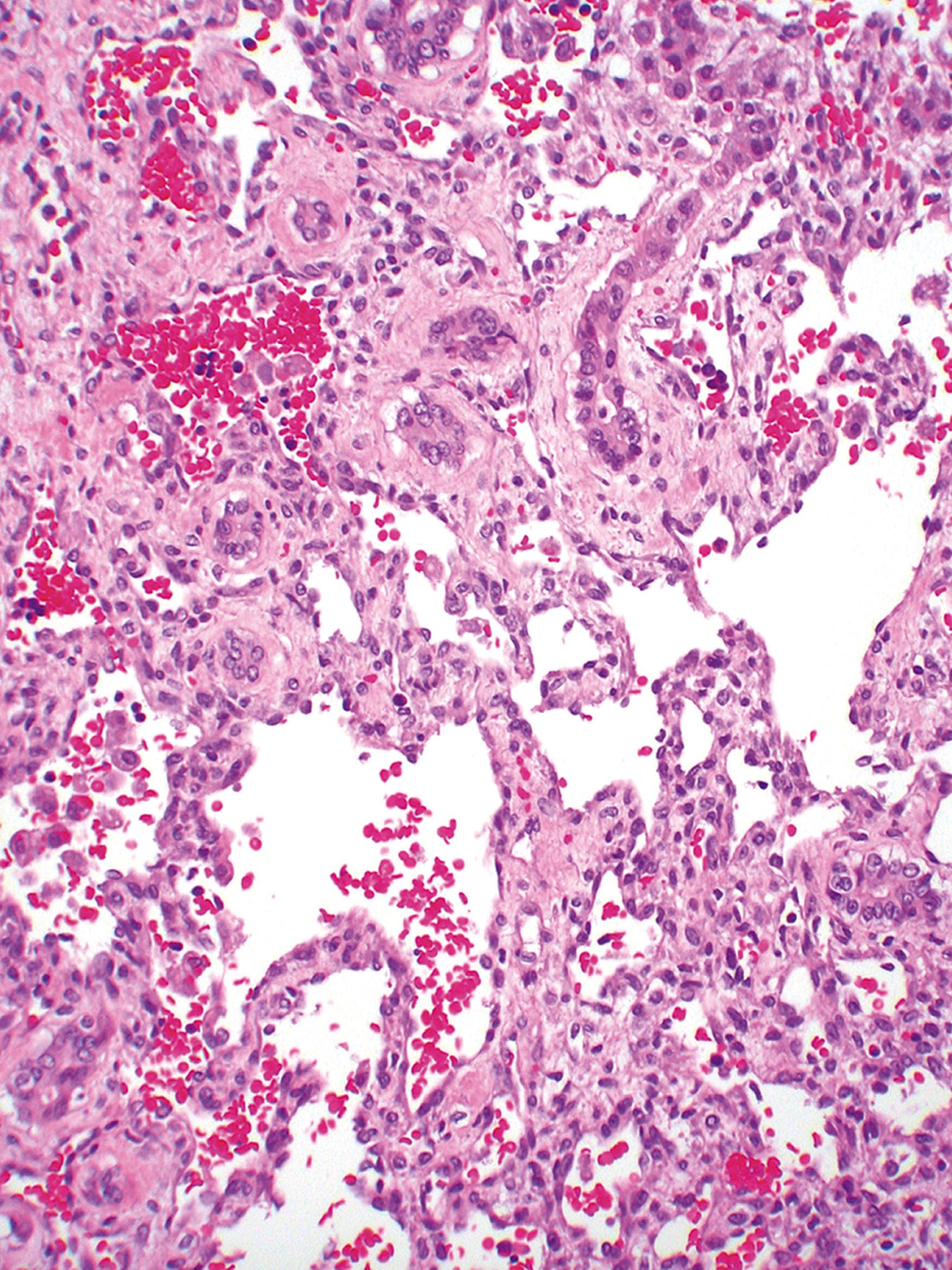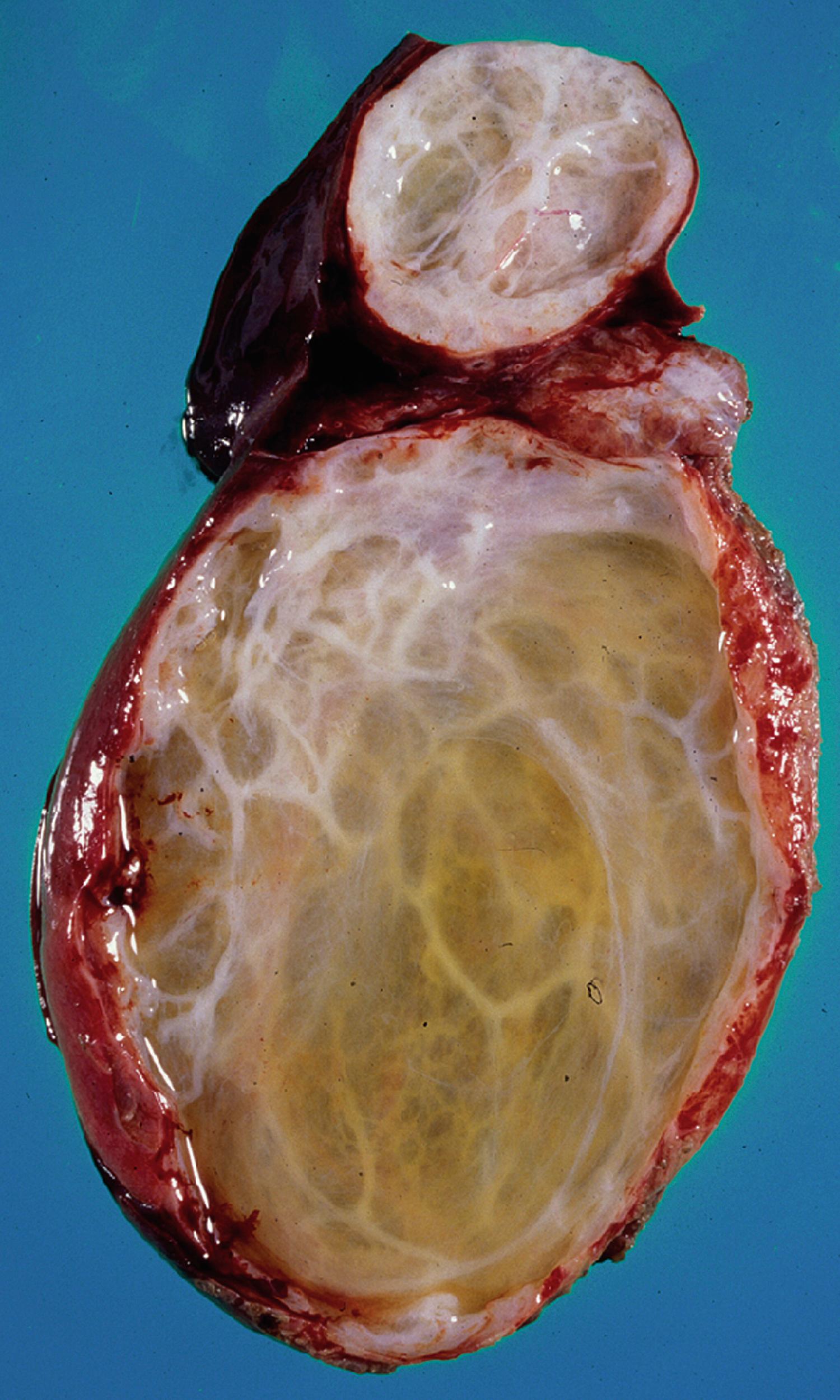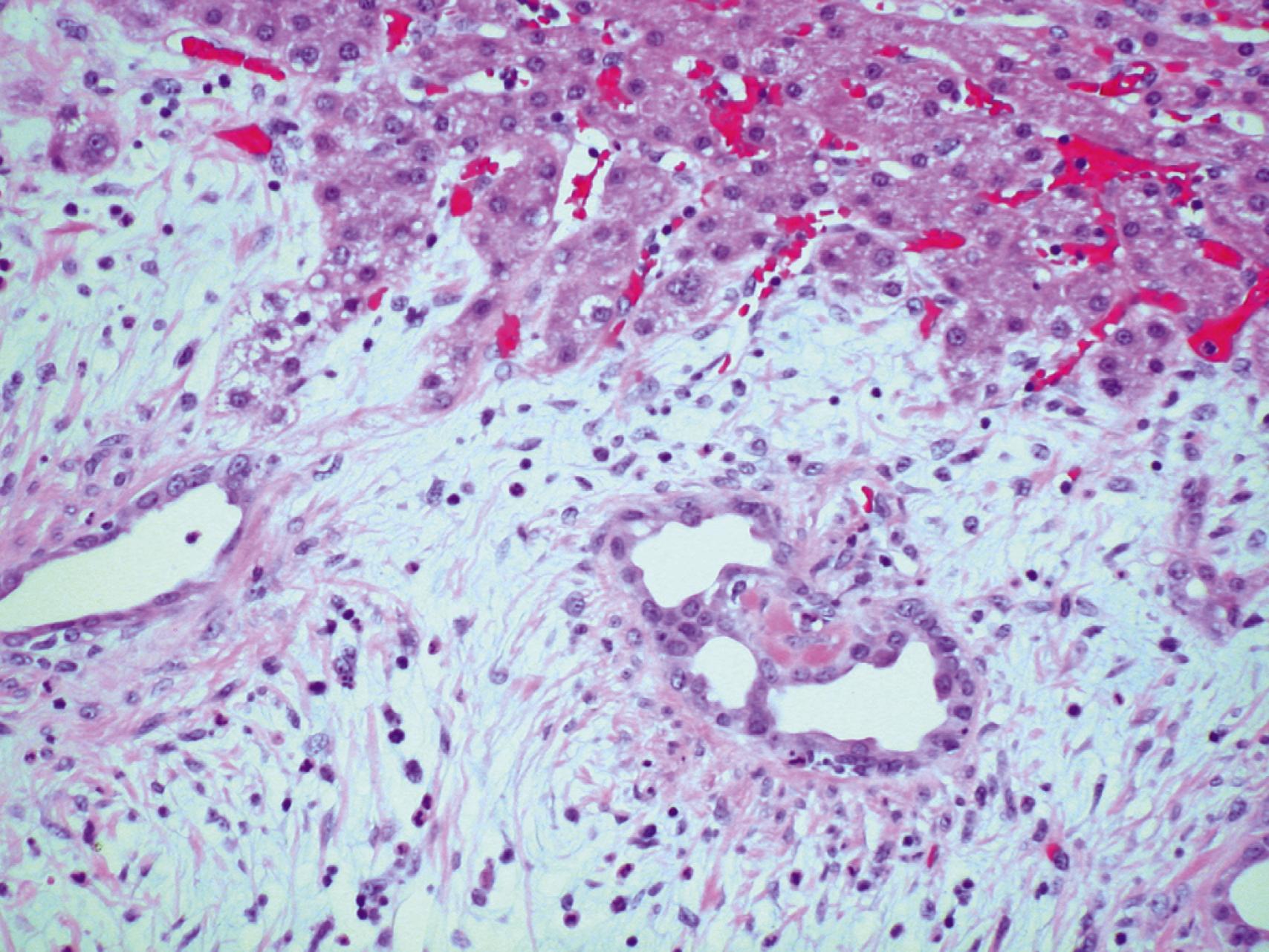Physical Address
304 North Cardinal St.
Dorchester Center, MA 02124
Hepatic tumors make up only 1% to 4% of pediatric solid tumors, and most of these are metastatic lesions from an extrahepatic site. The symptoms leading to their diagnosis are usually nonspecific and may be erroneously attributed to an underlying gastrointestinal condition. Being able to recognize these hepatic neoplasms is important as a prompt and correct diagnosis can be crucial to the survival of the patient. This chapter reviews the most common hepatic neoplasms encountered in childhood, with a complete list detailed in Table 48.1 .
| Tumor | Most Common Age at Presentation |
|---|---|
| Infantile hemangioma | <6 months |
| Hepatoblastoma | <5 years, most <2 years |
| Hepatocellular carcinoma | >5 years |
| Fibrolamellar variant of hepatocellular carcinoma | Second decade |
| Mesenchymal hamartoma | Most <2 years |
| Focal nodular hyperplasia | Second decade in adults, 2–5 years in children |
| Hepatocellular adenoma | >10 years |
| Nodular regenerative hyperplasia | All ages |
| Undifferentiated embryonal sarcoma | 5–10 years |
| Angiosarcoma | All ages |
| Embryonal rhabdomyosarcoma | <5 years |
| Teratoma | <1 year |
| Cholangiocarcinoma | Adulthood, adolescence |
Hepatic tumors can be classified as benign or malignant. The most common pediatric benign neoplasms of the liver include hepatic hemangiomas, mesenchymal hamartomas, focal nodular hyperplasia (FNH), and hepatic adenomas. The malignant hepatic tumors include hepatoblastoma, hepatocellular carcinoma, undifferentiated embryonal sarcoma, embryonal rhabdomyosarcoma of the biliary system, and cholangiocarcinoma. Two of these tumors account for roughly 80% of liver neoplasms in children younger than the age of 2 years; hepatic hemangiomas usually occur in the first 6 months of life and 90% of hepatoblastomas present in the first 5 years of life (68% in the first 2 years). In contrast, undifferentiated embryonal sarcomas are most commonly encountered in school-aged children.
Like their cutaneous counterparts, hepatic vascular lesions have been plagued with the overlapping nondiscriminatory use of various terms such as hepatic hemangioma; cellular, cavernous, or capillary hemangioma; infantile hemangioendothelioma; and arteriovenous malformations. The use of the widely accepted term infantile hemangioendothelioma should be avoided to prevent confusion with epithelioid hemangioendothelioma , which is a low- to intermediate-grade malignant tumor with metastatic potential. Hepatic hemangiomas are the most common benign liver tumors that occur in children, and based on more recent analysis, they can be classified into three subtypes—focal, multifocal, and diffuse. Approximately 30% of hepatic hemangiomas occur in the first month of life, with the majority of the remainder being diagnosed in the first 6 months of life. Focal lesions are often asymptomatic but may be detected antenatally on routine ultrasound, after which they undergo rapid spontaneous involution. , The natural evolution of most hepatic hemangiomas is proliferation, stabilization, followed by slow and spontaneous involution.
Given the vascular nature of these lesions, anemia is common (50%). Most patients have recognizable abdominal enlargement, and 10% to 15% of patients have congestive heart failure at presentation, particularly those with diffuse lesions. Diffuse lesions are extensive and may nearly replace the liver parenchyma; children with the lesions often have serious clinical complications of massive hepatomegaly that may result in respiratory compromise, abdominal compartment syndrome, and multiorgan system failure. Severe hypothyroidism has been reported rarely and is attributed to increased activity of type 3 iodothyronine deiodinase within the hemangioma. Less common signs and symptoms include jaundice (20%), thrombocytopenia (including Kasabach-Merritt syndrome), failure to gain adequate weight, fever, and intra-abdominal/intrahepatic hemorrhage. , Although extrahepatic anomalies or syndromes such as Beckwith-Wiedemann have been associated with hepatic hemangiomas, the most frequent extrahepatic finding is cutaneous hemangiomas, which are seen mostly in patients with multifocal or diffuse hepatic lesions.
The diagnosis is usually suggested by radiographic evaluations. Ultrasound reveals hypoechoic, hyperechoic, or complex lesions as well as multifocality with Doppler showing minimal or no signal. Computed tomography (CT) and magnetic resonance imaging (MRI) can better delineate the lesions and detect extrahepatic foci. Selective angiography can then identify the major feeding vessels. , Biopsies are generally avoided given the vascularity of the lesion.
Multifocal and diffuse lesions extensively involve the liver, with reddish nodules ranging from a few millimeters to 3 cm. The cellular nodules contain closely packed capillaries with plump endothelium surrounded by pericytes; the capillary endothelium is immunoreactive for GLUT1, an erythrocyte-type glucose transporter protein that consistently marks the endothelium of hemangiomas and has proven utility in classifying hepatic hemangiomas. Mitotic activity can be prominent in regions of greatest cellularity and diminishes in areas of regression as vascular channels become more obvious. Multifocal lesions may number from 2 to more than 25 and frequently involve large portions of both liver lobes. , Approximately one-third of lesions are solitary and range from less than 1 to 13 cm in greatest diameter. Focal hemangiomas typically have extensive central hemorrhage or infarction with focal calcifications and a peripheral spongy appearance. Histologically, the central zones contain large, tortuous thin-walled channels with dense fibrous stroma. The outer portion is characterized by capillary-sized vessels lined by plump endothelium that is nonreactive to GLUT1; entrapped hepatocytes and bile ducts are common and neighboring hepatic sinusoids may be dilated ( Fig. 48.1 ). Although some observers have regarded these lesions as vascular malformations, many believe they represent the hepatic counterpart of the so-called cutaneous “rapidly involuting congenital hemangiomas.” , ,

Treatment depends on the severity of extrahepatic symptoms. Asymptomatic patients with focal or multifocal disease, who lack significant shunting, should be observed and undergo serial ultrasonography to document regression. Hypothyroidism should be excluded. To hasten spontaneous regression, propranolol is used as the first-line agent in treatment of not only hepatic hemangiomas but also cutaneous forms of hemangiomas, when the affected individuals are symptomatic. Propranolol at a dose of 3 mg/kg/day for 6 months proved to be safe and efficacious in infants with segmental and localized lesions, as compared to placebo. Despite the infrequent side effects of systemic vasodilation and hypoglycemia, propranolol led to a significant reduction in the hemangioma surface area and even complete resolution of the hemangioma. Other medical treatment with diuretics alone or in combination with α-interferon or steroids has been used in patients with hemodynamically significant shunting. Patients in congestive heart failure or with large shunts should be considered for early embolization or undergo surgery when the lesion is resectable. , Historically, infants with diffuse hepatic hemangiomas have had a poor response to pharmacologic therapy alone and have commonly progressed to require orthotopic liver transplantation. , However, recent studies have suggested excellent response to propranolol, even in diffuse hepatic hemangiomas with cardiovascular instability.
Even with large or multifocal lesions, the survival of infants is excellent, with rates of 70% to 92% to at least 2 years using surgery or other treatments. , , Most deaths that occur are in young infants with diffuse lesions who present with congestive heart failure and jaundice. ,
Mesenchymal hamartomas of the liver are benign tumors that usually present with an enlarged abdomen from ascites in the first 2 years of life.
Ultrasonography, CT, or MRI imaging can define the location of the mass and can generally distinguish this tumor by its fluid-filled multicystic parenchyma ( Fig. 48.2 ) from hepatoblastomas or infantile hemangiomas, the other liver tumors that commonly occur in this age group. The well-circumscribed tumor comprises a variably dominant mixture of loose mesenchyme, irregular bile ducts and ductules, and peripherally placed hepatocyte cords and blood vessels ( Fig. 48.3 ). Proposed etiologies have included developmental anomalies, biliary obstruction, and segmental ischemia, but recurring abnormalities involving chromosome band 19q13 corroborate a neoplastic origin. Androgenetic/biparental mosaicism has been demonstrated in hamartomas from patients who have associated disorders (i.e., placental mesenchymal dysplasia or Beckwith-Wiedemann syndrome) as well as in those without suspected somatic mosaicism. These findings support heterogeneous genetic causes, including dysregulated imprinting, for tumor development.


Hamartomas typically enlarge quickly in the first few months of life. Some then stabilize while others continue to grow; spontaneous partial regression has been reported rarely in highly vascular lesions. Surgical resection is the treatment of choice, with an excellent expected prognosis. Few have been associated with undifferentiated embryonal sarcomas.
Become a Clinical Tree membership for Full access and enjoy Unlimited articles
If you are a member. Log in here